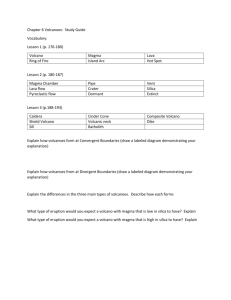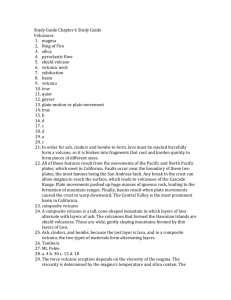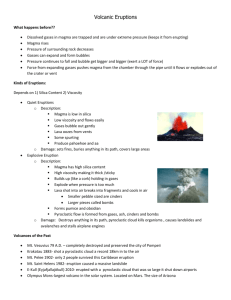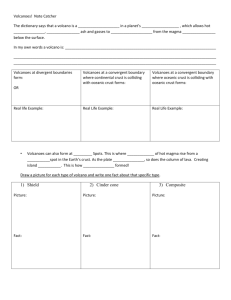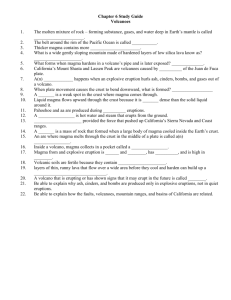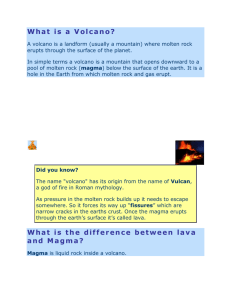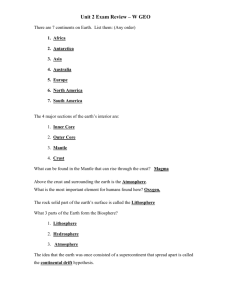Volcanoes 11.4
advertisement
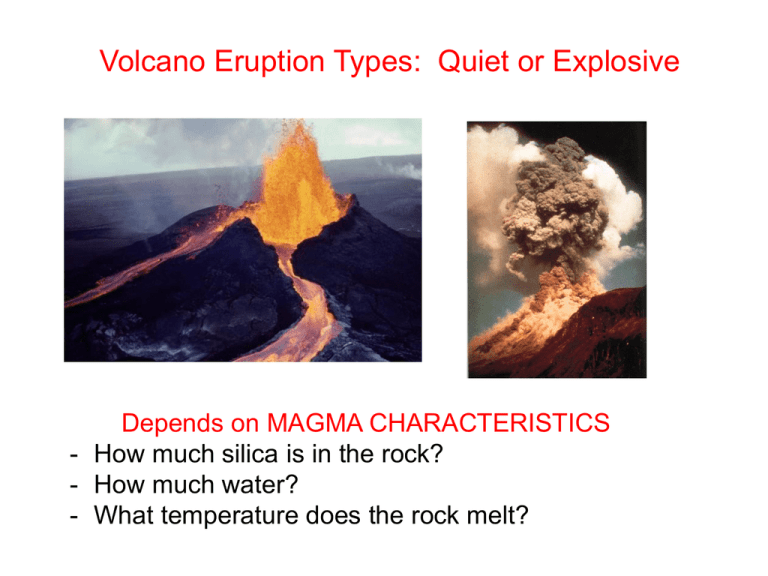
Volcano Eruption Types: Quiet or Explosive Depends on MAGMA CHARACTERISTICS - How much silica is in the rock? - How much water? - What temperature does the rock melt? Magma Composition and Characteristics Granitic Ocean Crust Melt (Mafic Magmas) Continental Crust Melt (Felsic Magmas) Eruption Types: Quiet = • Low silica content • High water content • High temp. magma (deep mantle source) • Low viscosity (runny, low silica) • Runny/Liquidy Lava Hawaiian Hotspot Volcanoes: Hot spot volcanoes are made from Deep Magma Plumes from the Mantle. This is hot, low silica rock from deep in the mantle! Pahoehoe A’a Explosive Eruptions: • High-silica content (continental crust melt) • Low temp. magma • High viscosity • High gas content • PYROCLASTIC – gas, ash, superheated rock fragments. Subduction/Ring of Fire Volcanoes: Subduction volcanoes are made from melting rocks of the CRUST. Crustal rock is high in silica. Magma is cool because it is formed in the crust (not deep in the mantle). Mount St. Helens, WA “pyroclastic” Eruption Types Mount St. Helens, WA Pre 1980 eruption Today Post 1980 eruption Yellowstone is over a hot spot where magma from the mantle is rising and melting the crust above. This magma heat water for hot springs and geysers. There are no volcanoes there now, but have been in the past. A Yellowstone volcano would be formed by melting a lot of continental crust. This would make silica rich magmas that are EXPLOSIVE. Volcano Hazards: Why are volcanoes Least Hazard dangerous? Great Hazard 1. Lava flows (burns/ fire) 2. Ash (buries, suffocates) 3. Pyroclastic flows (gas, ash, superheated rock fragments <bombs>) 4. Mudflows/Lahars 5. Acidification of water 6. Climate change/mass extinction Lahar: Volcanic landslide/mudslide Eruptions and Eqs that accompany them trigger landslides; Lava melts snow at the top of the volcano Mudslide Very Hazardous wipe out villages/ fatalities
